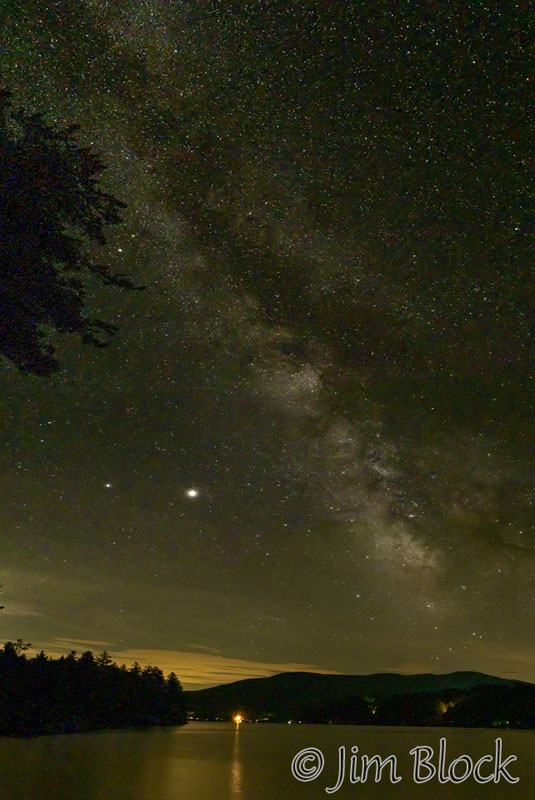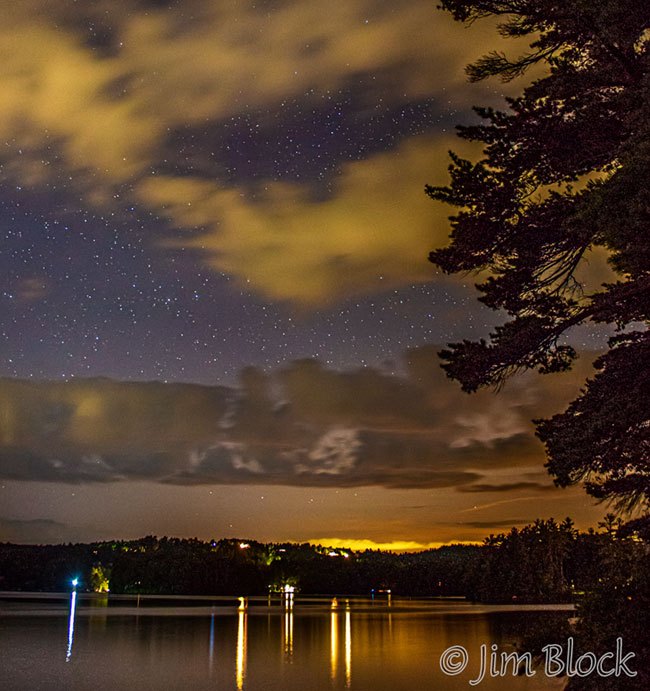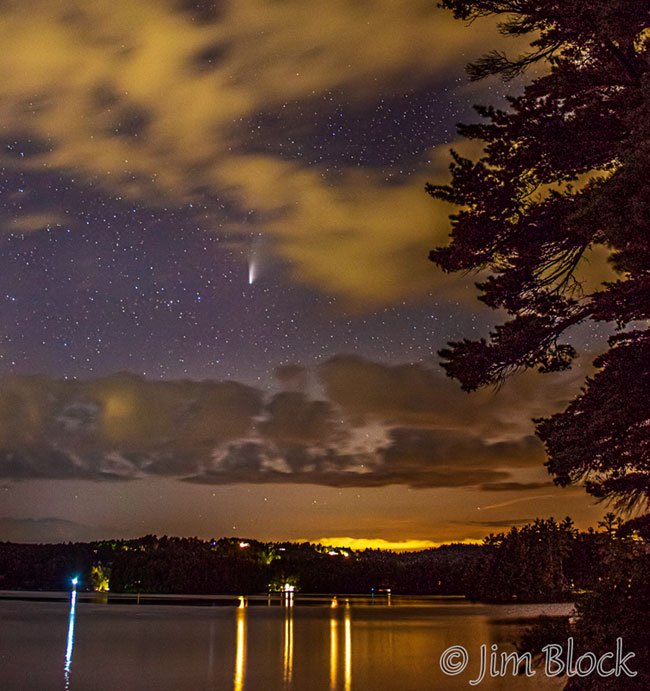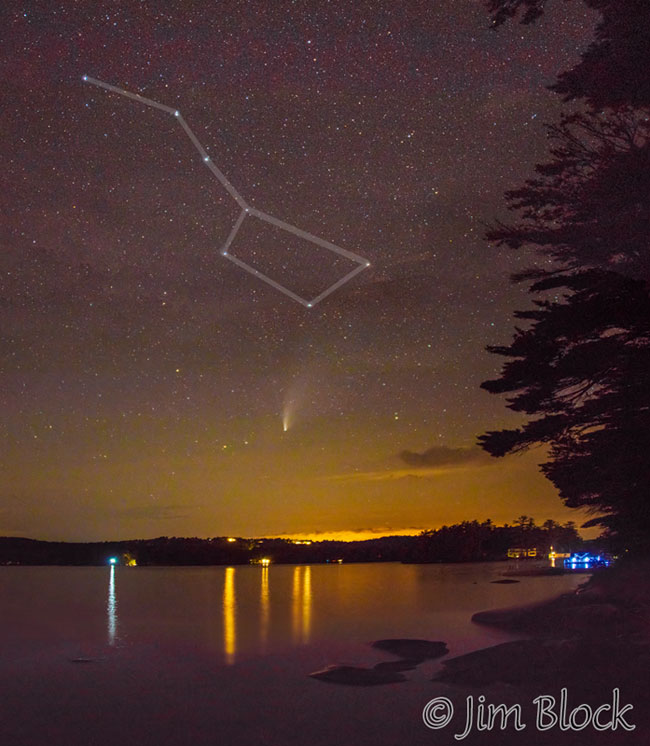

Comet NEOWISE paid us a visit in mid-July, 2020. You can still see it if you hurry and choose a clear night. Look to the NW below the Big Dipper an hour or so after sunset, as in the photo above. As the days go by it will start farther to the left and be a bit less visible. It will be above and to the right of the waxing moon. But look soon, the next chance you will have will not be until the year 8786.
I photographed the comet July 20 and 21 between 10 PM and midnight. I used a half-frame camera on July 20 (“the best camera is the one that is with you”) and a full-frame on July 21. As expected, the full-frame produced images with higher quality and less noise.
Above and to the right is a “close-up” of the comet with a long lens on July 20.
Below is the comet at 11:19 PM, July 20. The light at the far left is Burkehaven Lighthouse on Lake Sunapee.
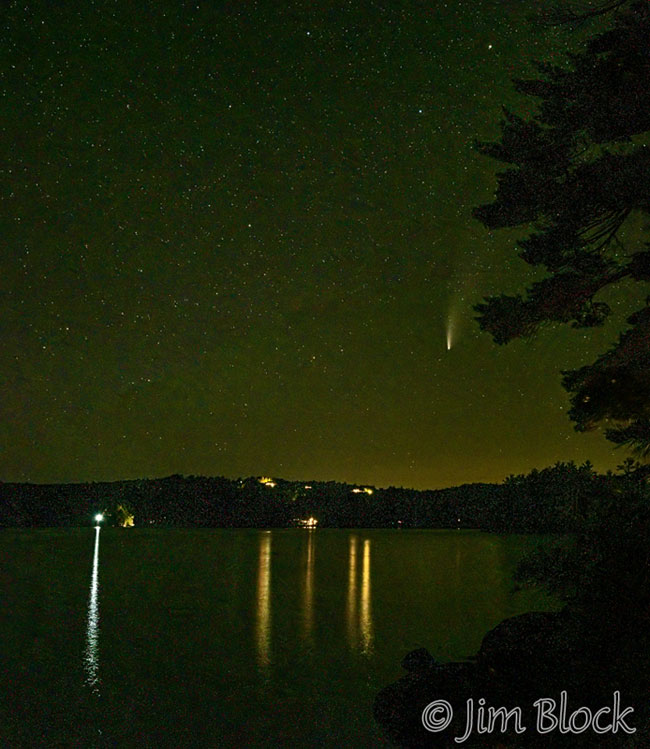
At 10 PM on July 21 I got this photo before the clouds moved in.
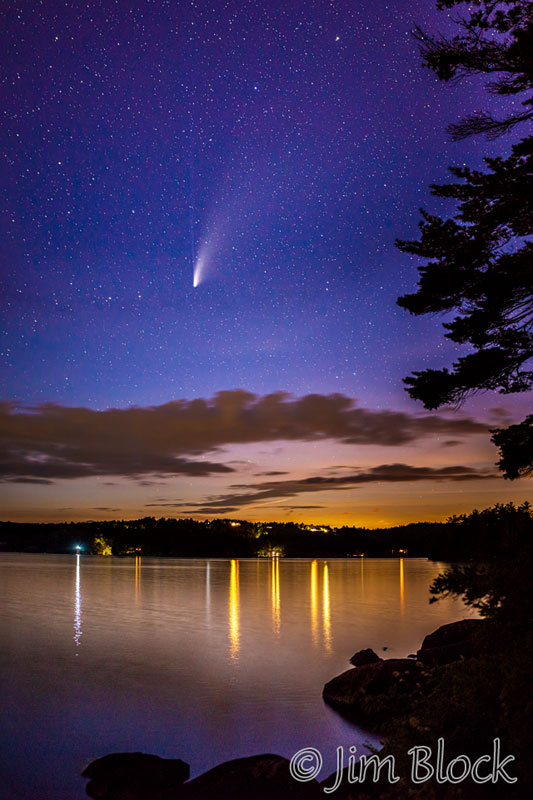
If you look very closely at the photo above, or at the cropped version below, you might be able to see the two tails of the comet. The blue ion tail on the left points directly away from the sun and is pushed out by the flowing and charged solar wind. Structure in the ion tail comes from different rates of expelled blue-glowing ions from the comet’s nucleus, as well as the complex structure of our sun’s wind. The main dust tail is pushed out by sunlight, but curves as heavier dust particles are better able to resist this light pressure and continue along a solar orbit.
Here is a cropped version of the above image that perhaps better shows the two tails.
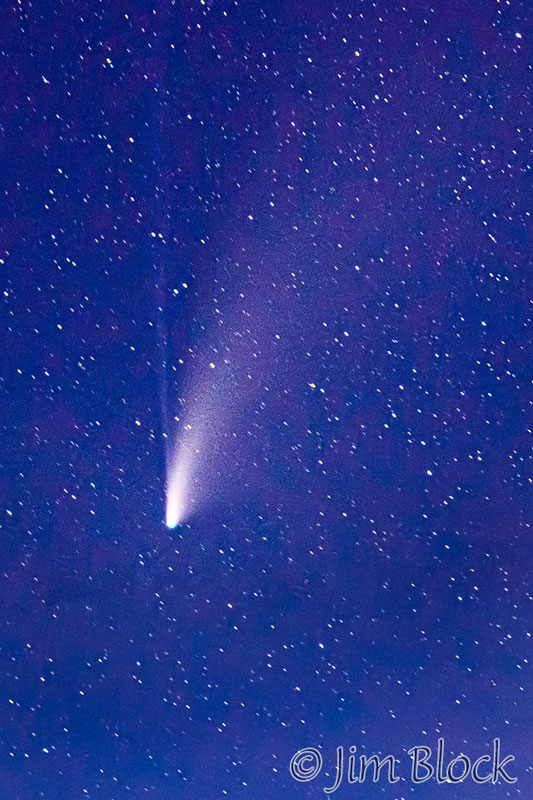
Twenty minutes later it was a now-you-see-it-and-now-you-don’t as clouds moved through.
Here is a similar photo taken a few minutes later.
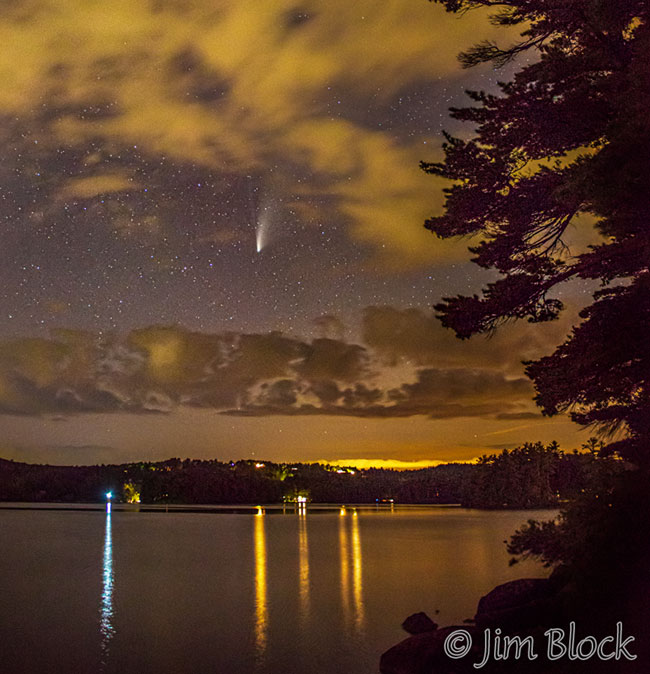
Just before 11 PM the sky cleared. The comet was moving to the right and eventually was soon blocked by the trees.
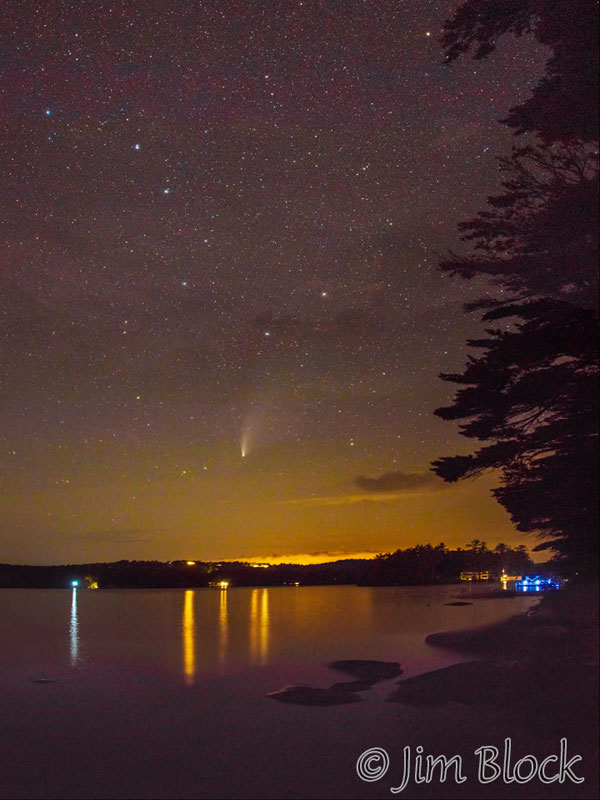
Just before midnight I got a last photo looking NW toward Harbor Hill and Burkehaven Cove in Sunapee.
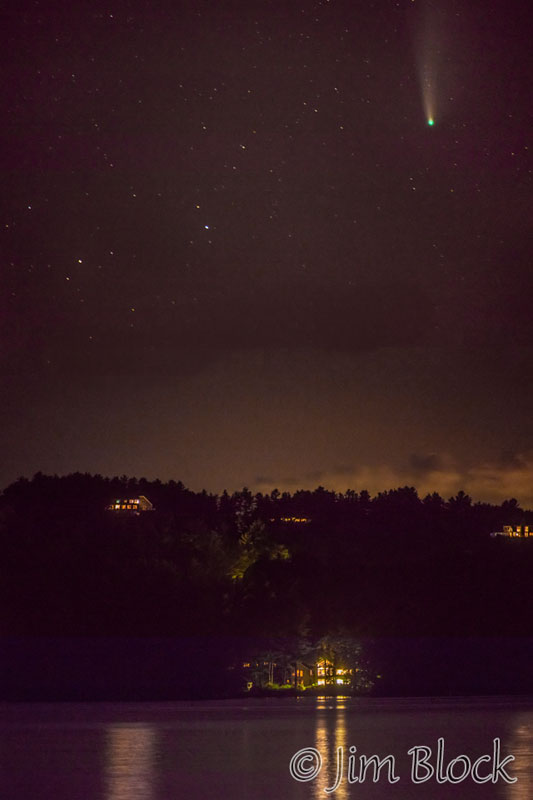
While awake in the “middle-of-the-night” on July 20 (at 11:32 actually), I took a few photos of the Milky Way looking to the SW. The two bright stars to the left of the Milky Way are Saturn and Jupiter, which is the brighter one to the right. The mountain range is Mount Sunapee with South Peak and the wonderful White Ledges above Lake Solitude to the left of the main peak.
